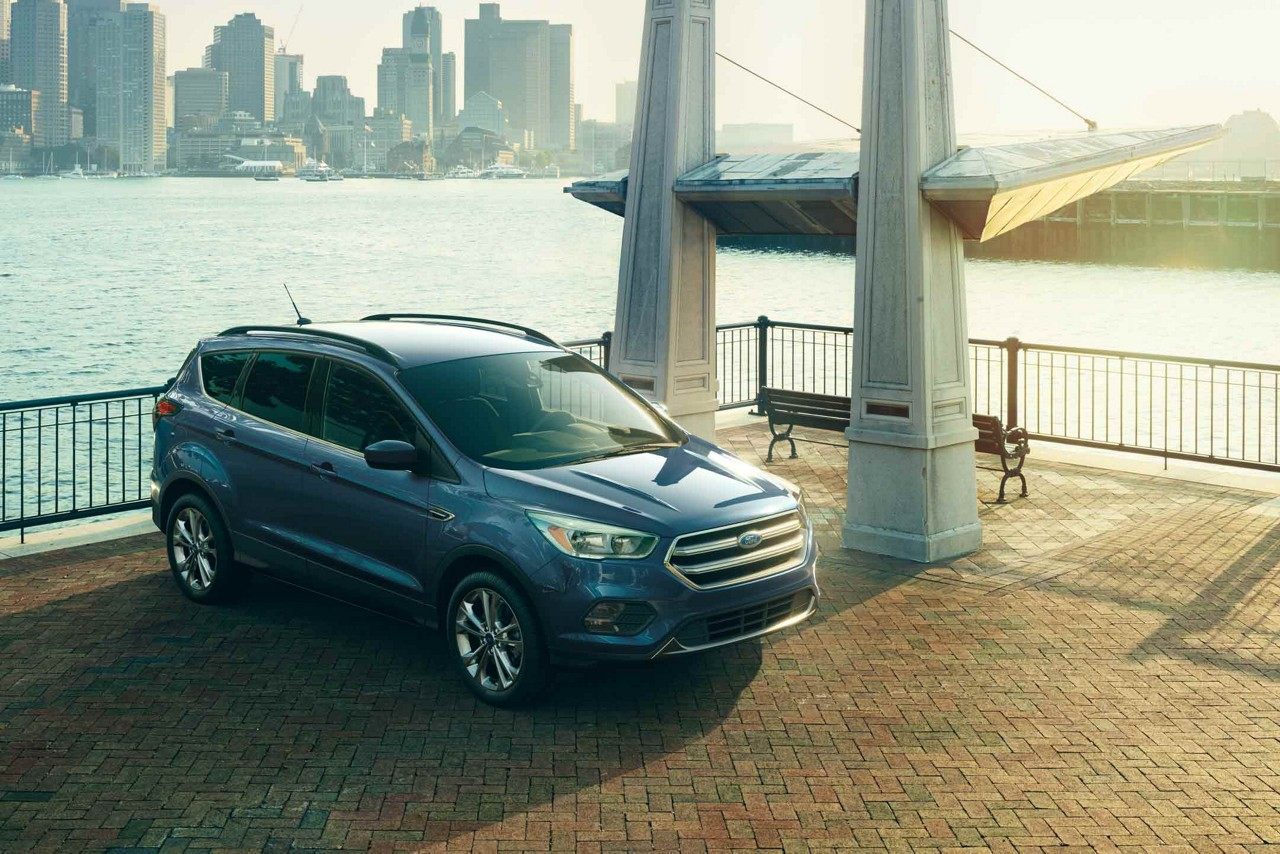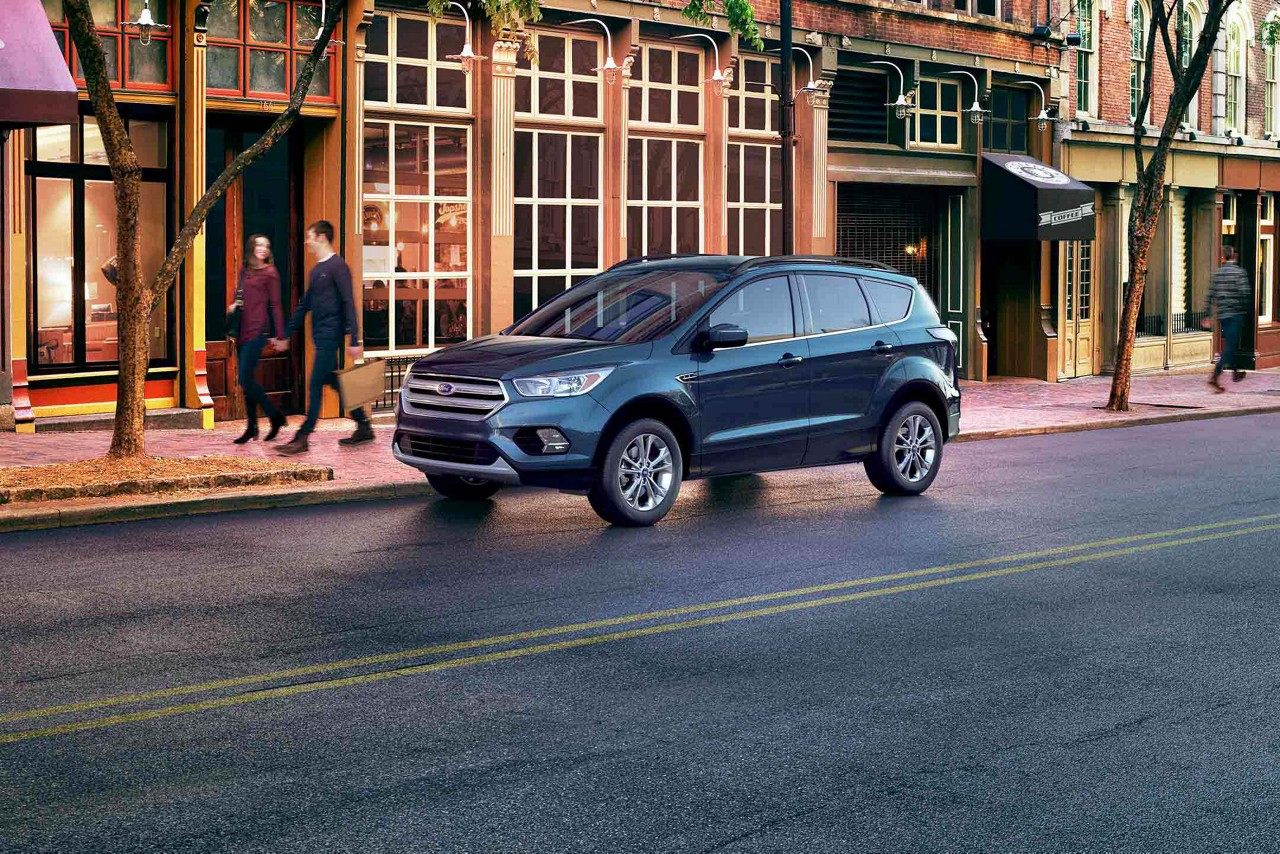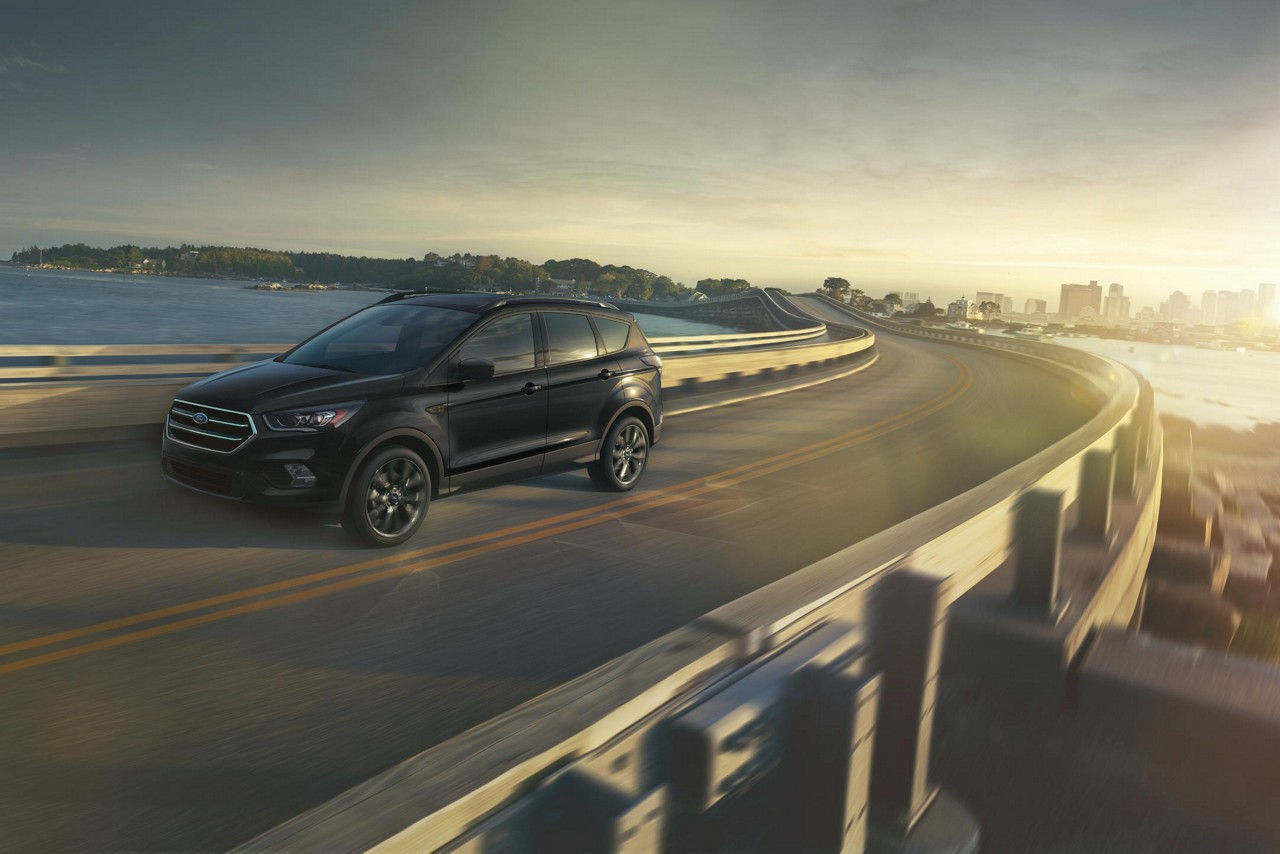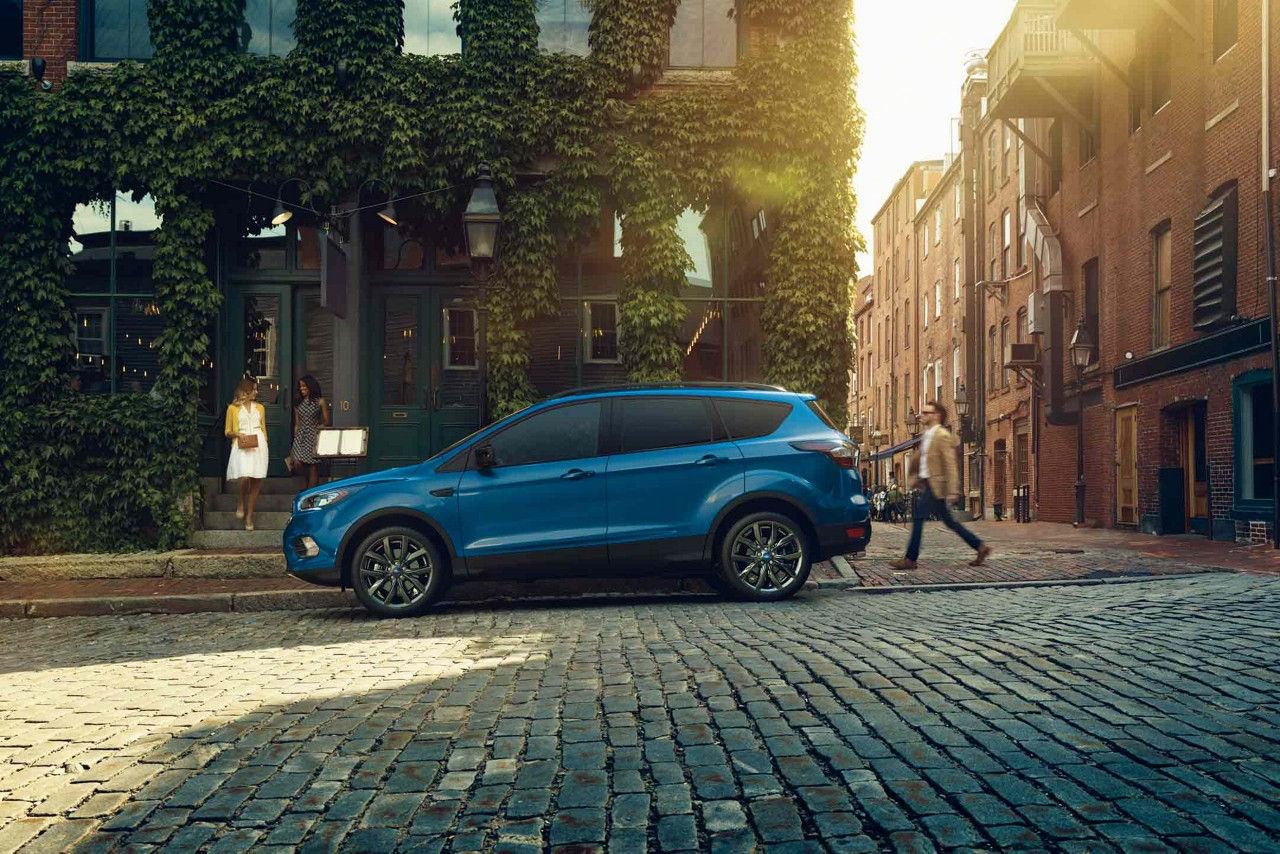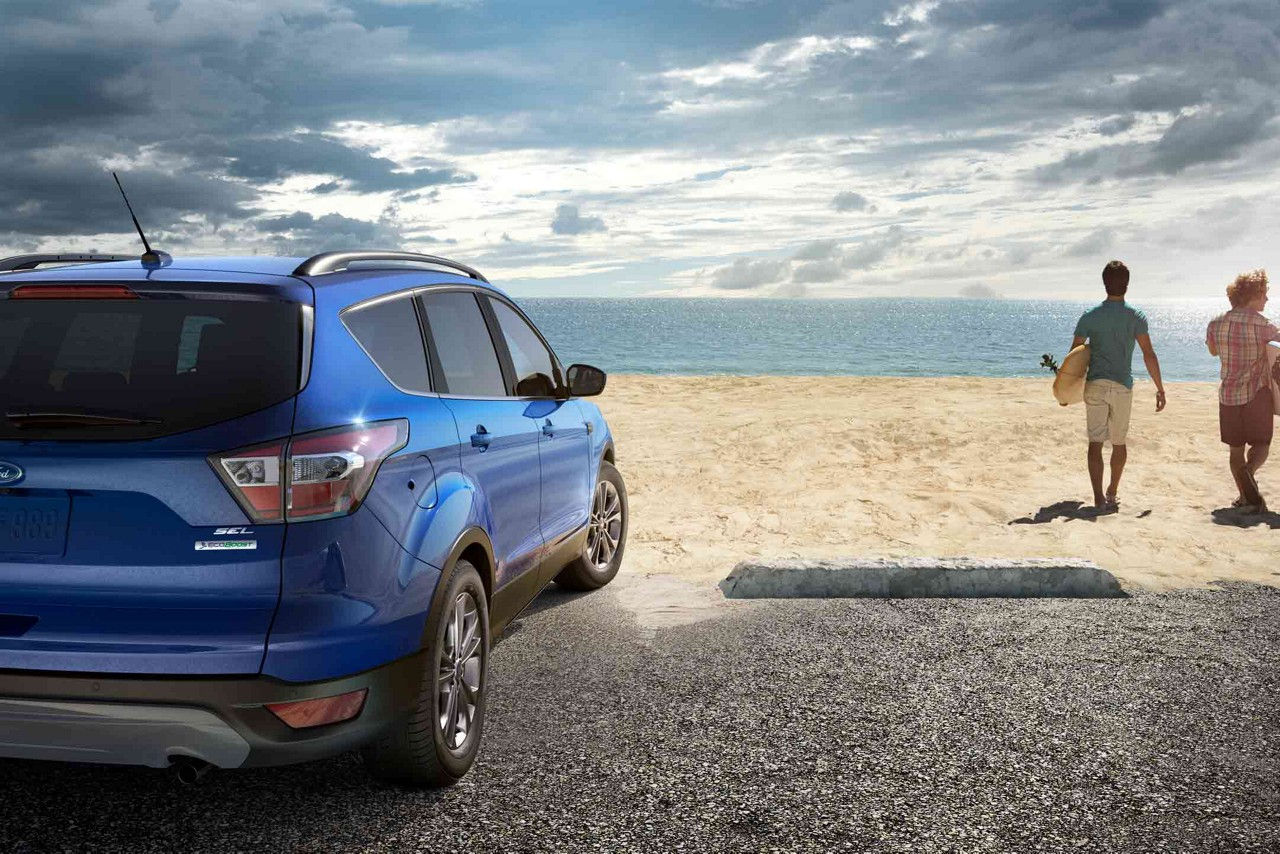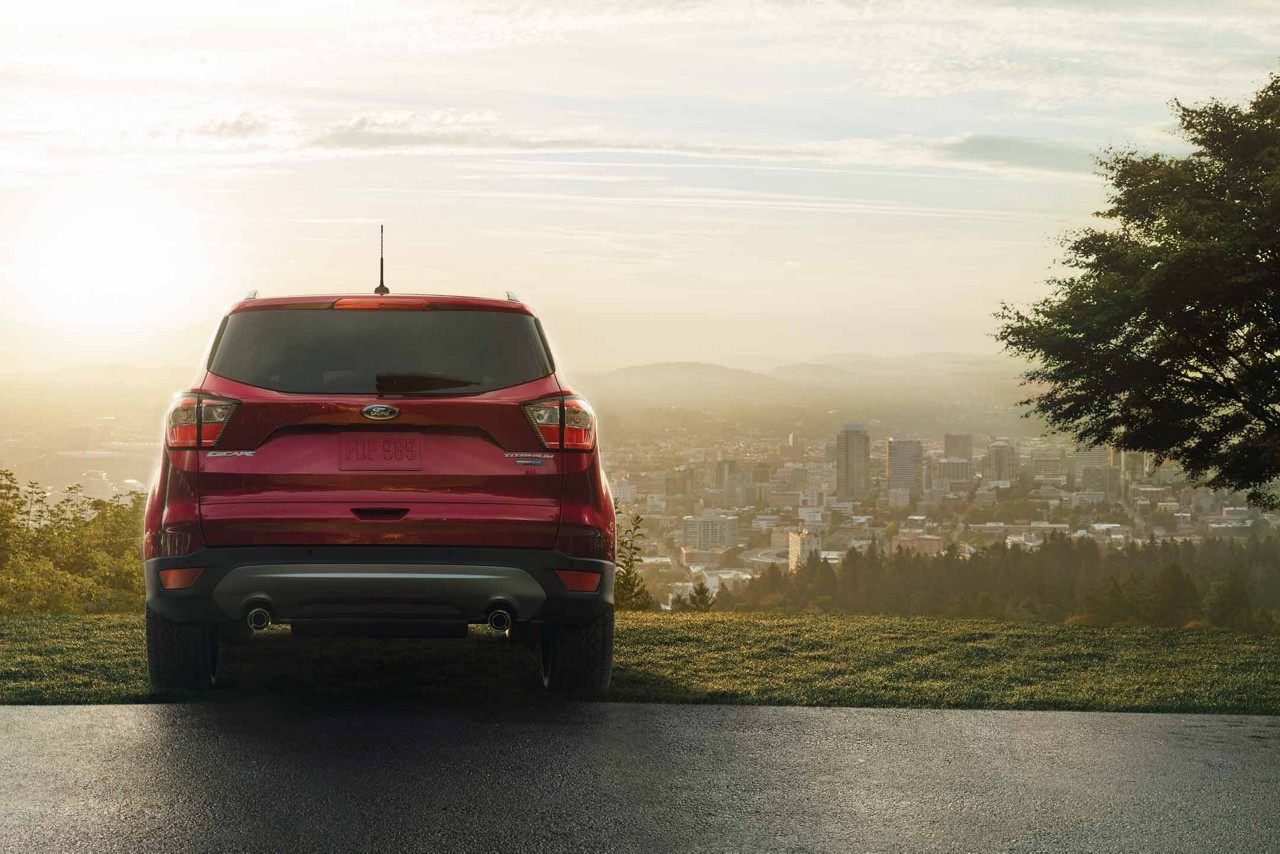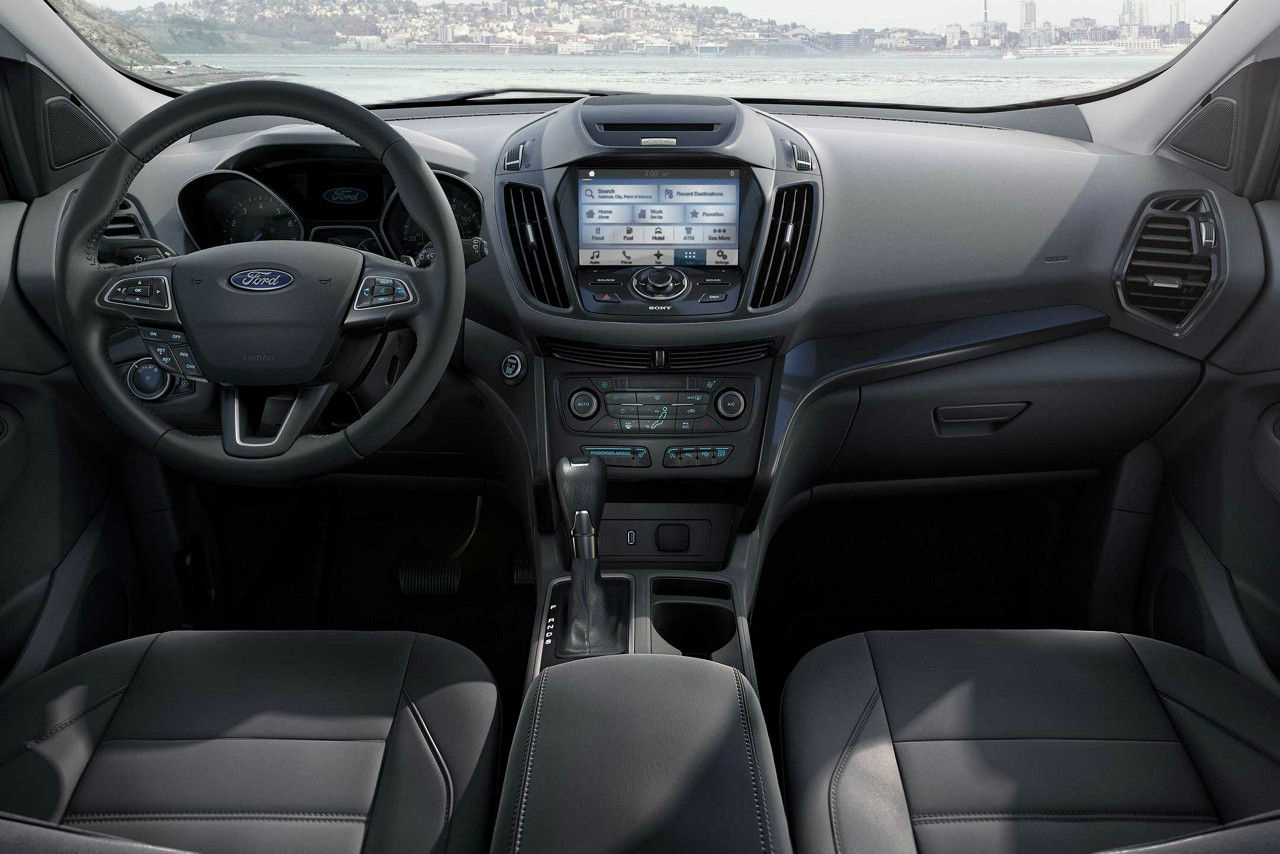Ford’s small crossover Escape model continues the success that came quickly with the first generation’s introduction in the 2001 model year. As sedans continue to lose sales to buyers favoring pickup trucks and small crossovers, there is every reason to expect the 2018 Ford Escape will continue to meet the needs of many buyers.
In 2016 the Escape was the second best-selling Ford, behind the F-150 pickup truck. The Escape was also the fourth best selling compact crossover in 2016, trailing the Honda CR-V, Toyota RAV4, and Nissan Rogue, and 12th-best-selling vehicle overall in the United States. Through September 2017, the Escape has kept its relative position with pickup trucks and other crossovers, but has moved up to 11th position overall, outselling last year’s No. 11, the Nissan’s midsized Altima sedan.
It’s notable when looking at the 2018 models that the 2017 Ford Escape earned the National Highway Traffic Safety Administration’s Overall 5-Star Crash Safety Rating and was voted the Most Trusted SUV in the Reader’s Digest Survey.
What’s new for 2018
Ford did not make big changes in the 2018 Escape, the sixth year of the crossover’s third generation. Automakers don’t usually signal generation changes any earlier than they need to, especially for models that are still selling well.
There’s no good reason to stifle sales by giving potential buyers a reason to hold off to wait for a new generation with the presumption of major improvements. That being said, the first-generation Escape sold for seven model years (2001-2007) and the second-generation for five years (2008-2012). It’s a strong bet 2019 or 2020 will kick off the fourth-generation Escape. If and when we learn of a new generation for the Escape, we’ll cycle back to this model year overview with a heads up.
The biggest change for 2018 Ford Escape is an additional trim level, the SEL. There are now four levels: The S, SE, SEL, and Titanium. The SEL has leather seats, a power liftgate, heated side mirrors, signature LED lighting, Ford’s SYNC 3 with an 8-inch display, and a reverse sensing system.
The SE gains heated front cloth seats, roof side rails, and a perimeter alarm. The 2018 Escape Titanium has a 2.0 EcoBoost engine, standard navigation system, enhanced parking assistance, and high-intensity (HID) headlamps.
See below for more information on 2018 Ford Escape trim level differences.
2018 Ford Escape engines
Depending on trim level, the new Ford Escapes use one of three different four-cylinder engines. The base-level Escape S has a 2.5-liter iVCT engine with Flex-Fuel capability. This engine produces 168 horsepower at 6,000 rpm and 170 pound-feet of torque at 4,500 rpm and is EPA rated at 21 mpg in city driving and 29 mpg on the highway.
The Escape SE and SEL Escape trim levels get down the road with a smaller but more powerful turbocharged 1.5-liter EcoBoost motor that makes 179 hp at 6,000 rpm and 177 lb-ft of torque at 2,500 rpm. Fuel economy ratings for the 1.5-liter engine are 23 mpg in city driving and 30 mpg highway driving.
The Escape Titanium’s 2.0-liter TwinScroll EcoBoost engine splits the exhaust gases with two cylinders each pushing the turbocharger and bumping the power output to an impressive 245 hp at 5,500 rpm and 275 lb-ft at 3,000 rpm. All that power takes a hit on the fuel economy, with the Titanium rated at 21 mpg in the city and 28 mpg on the highway.
Not available with the Escape S, but a $1,350 option on other trim levels, Intelligent 4WD monitors traction and road conditions every 16 milliseconds and can transfer traction from the front to rear wheels as needed.
2018 Ford Escape tech
The new Escape’s safety, security, and driver assist feature list starts with the following, standard with all trim levels: Electric parking brake, traction control, roll stability control, torque vectoring control, and curve control. Every Escape also has a Securilock passive antitheft system, remote keyless entry, and smart key. In addition, the 2018 Escapes all have a rearview camera, ABS, integrated blind spot mirrors, and an SOS Post-Crash Alert System.
The SE, SEL, and Titanium models can be ordered with several driver assistance features individually or in a package. The Ford Safe and Smart Package, a $1,295 upgrade, includes driver-activated front rain-sensing windshield wipers, adaptive cruise control and forward collision warning with brake support, auto high-beam headlamps, BLIS (Blind Spot Information System) with Cross-Traffic Alert, Lane-Keeping System, and rain-sensing front windshield wipers. For the SE and SEL, the package also includes an auto-dimming rearview mirror and a windshield wiper de-icer, both standard features on Titanium model.
How to choose a 2018 Ford Escape
The four 2018 Escape has four trim levels with longer feature lists as the price goes up. In one sense the Escape S stands alone as it’s the only trim level that cannot be equipped with 4WD or the Ford Safe and Smart Package. The choice between the SE, SEL, and Titanium is largely dependent on the level of comfort and convenience you prefer and are willing to pay for.
Escape S
Starting at $23,850, the 2018 Escape S has a 2.5-liter iVCT engine with Flex-Fuel capability and a six-speed automatic transmission with SelectShift. The base level Escape benefits from AdvanceTrac traction control with Roll Stability Control, Ford’s SYNC infotainment control system with voice recognition for communication and entertainment, and a 4.2-inch color LCD screen. Other features include a single USB smart-charging port, three 12V power ports, a rearview camera, curve control, electric parking brake, and 17-inch steel wheels.
The S trim has cloth seats, manual single-zone climate control, and AM/FM/MP3/single CD audio with six speakers. This Escape version has LED taillamps, emergency brake assist, tire pressure monitoring, power side mirrors with integrated blind spot mirrors, power windows, power door locks, and cruise control.
Escape SE
The Escape SE, starting at $25,605 for 2018, has the smaller but more powerful and economical 1.5-liter EcoBoost engine with auto start-stop. The SE adds to driver and passenger comfort with dual-zone automatic temperature control, 10-way power driver seat with power lumbar control, front heated seats, and power windows with one-touch up and down front and rear. Additional standard SE features include dual chrome exhaust tips, fog lamps, automatic headlamps, keyless entry keypad, a perimeter alarm, and roof rack side rails.
For an additional $1,295 list price and only available for this trim, the SE Sport Appearance Package includes 19-inch Ebony Black premium-painted aluminum wheels, halogen projector headlamps with black bezels and LED signature lighting, and LED taillamps with black bezels. The blacked-out theme continues with unique black front fender grilles, gloss black upper grille with chrome inserts and surround, gloss black front and rear lower fascia, and black roof rails. The package also comes with a leather-wrapped steering wheel and gear shift knob, and sporty V-shaped partial leather-trimmed seats.
Escape SEL
Starting at $28,005, the 2018 Escape SEL, as mentioned above, adds to the SE feature list leather seats, a power liftgate, heated side mirrors, signature LED lighting, Ford’s SYNC 3 with an 8-inch display, and a reverse sensing system. The SEL also has two USB smart-charging ports, Apple CarPlay and Android Auto, and four 12V powerpoints.
Escape Titanium
Fitted with the greatest array of Escape comfort and convenience features plus the most powerful engine, the 2018 Titanium starts at $32,045. The Titanium has push-button start, leather 10-way power adjustable, heated driver and front passenger seats, driver seat memory, remote start, and a heated steering wheel. The top trim has a voice-activated touchscreen navigation system, a 10-speaker Sony audio system, and includes the 2.0-liter EcoBoost Class II trailer tow package with trailer sway control, auxiliary transmission oil cooler, and paddle shifters. With the tow package, the Titanium can pull up to 3,500 pounds.
Other niceties standard with the Escape Titanium include illuminated visor mirrors and four power points (three 12V, one 110V). An active parking assist feature helps with parallel parking and reverse perpendicular parking. The Titanium’s features list continues to include side sensing lamps, a universal garage door opener, heated side mirrors, daytime running lamps, foot-activated power liftgate, and front windshield wiper de-icer.
| Trim | 2018 Escape S | 2018 Escape SE | 2018 Escape SEL | 2018 Escape Titanium |
| Base price | $23,850 | $25,605 | $28,005 | $32,045 |
| Drive wheels | Front | Front | Front | Front |
| 4WD/AWD? | AWD optional | AWD optional | AWD optional | AWD optional |
| Base engine | 2.5L iVCT in-line 4 cylinder | 1.5L EcoBoost in-line 4-cylinder | 1.5L EcoBoost in-line 4-cylinder | 2.0L TwinScroll EcoBoost in-line 4-cylinder |
| Base horsepower | 168 @6,000 rpm | 179 @ 6,000 rpm | 179 @ 6,000 rpm | 245 @5,500 rpm |
| Base torque | 170 lb-ft @ 4,500 rpm | 177 lb-ft @ 2,500 rpm | 177 lb-ft a@ 2,500 rpm | 275 lb-ft @ 3,000 rpm |
| Transmission | Six-speed Automatic | Six-speed Automatic | Six-speed Automatic | Six-speed Automatic |
| Fuel | Regular gas | Regular gas | Regular gas | Regular gas |
| Fuel capacity (gallons) | 15.7 | 15.7 | 15.7 | 15.7 |
| Fuel economy | 21 city/29 highway | 23 city/30 highway | 23 city/30 highway | 21 city/28 highway |
| Base wheels | 17-inch steel | 17-inch aluminum | 18-bright aluminum | 18-inch aluminum |
| Body style | 4-door SUV | 4-door SUV | 4-door SUV | 4-door SUV |
| Passengers | 5 | 5 | 5 | 5 |
| 3rd-row seating | N/A | N/A | N/A | N/A |
| Storage behind 2nd-row seats | 34 cu. ft. | 34 cu. ft. | 34 cu. ft. | 34 cu. ft. |
| Storage behind 1st-row seats | 66 cu. ft. | 66 cu. ft. | 66 cu. ft. | 66 cu. ft. |
| Max Towing capacity | N/A | 2,000 pounds | 2,000 pounds | 3,500 pounds |
| Seat upholstery | Cloth | Cloth | Leather | Leather |
